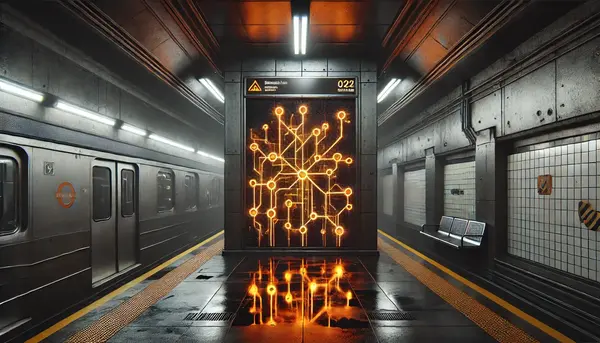

Giving Up on SEO for My Homelab’s Blog
 jonas
jonas- HomeLab
- January 8, 2025
Even though this is a personal blog and I don’t expect too much traffic, I’d still like it to be findable on Google.
Search Engine Optimisation (SEO) is the hidden art of improving your website’s ranking on search engines to appear as high as possible in search results.
Google offers guides on building a good website, but ticking all the boxes to rank well is no simple task. Still, I gave it my best shot. Below, I’ll walk through my journey, the challenges I faced, and the tools I used (you’ll find a table summarizing them at the end).
Favicon
The small icon at the top of your browser tab is surprisingly important. Along with your website’s name and description, it appears in most search results. However, different browsers look for different icon formats.
I found the RealFaviconGenerator invaluable. This tool converts your icon into all required formats and even generates the necessary HTML code to include on your site. The companion Checker ensures that all the common icons are present and properly defined.
Interestingly, the company I work for has missing icons. For mobile users, the icon doesn’t display properly in dark mode, and there’s no SVG (scalable vector graphic) icon. Most modern browsers prioritise SVG icons, so it’s a notable miss.
Search engines take this metadata into account. Missing icons or incomplete information can lower your site’s ranking.
Crawler Optimisation
Search engines rely on automated web crawlers to index the internet. Given the sheer number of websites, your site will only receive limited attention.
The goal is to provide crawlers with as much relevant information as possible while avoiding unnecessary duplication or indexing irrelevant sections. This is where the robots.txt and sitemap.xml files come in.
These files guide web crawlers by specifying which parts of your site to index and which to ignore. Optimizing these files requires some planning:
- robots.txt – Tells the crawler which sections of your site to skip.
- sitemap.xml – Lists the key pages you want indexed, helping the crawler focus on relevant content.
For example, here’s my current robots.txt:
User-agent: *
Disallow: /admin/
Disallow: /category/
Disallow: /tag/
Disallow: /about
Allow: /
Sitemap: https://boniclaud.com/sitemap.xml
This file excludes the /tag/ and /category/ directories since those pages merely aggregate posts by tags and categories. Meanwhile, my sitemap.xml highlights the pages I consider most relevant, helping crawlers avoid unnecessary work.
A quick note: There’s also a “do not index” directive, which prevents certain pages from appearing in search results. For example, my RSS feed isn’t useful as a search result, so I use this directive to keep it out of search indexes.
Performance and Accessibility
Website performance is another important factor. The faster and better your site loads, the higher your score.
Google’s PageSpeed Insights is an excellent tool for identifying performance issues. Most browsers also offer performance monitoring tools like Lighthouse for debugging.
Some tips:
- Minify CSS and HTML: Remove unnecessary comments and whitespace to reduce file size, even if the savings are small.
- Use optimized images: I use WebP images, which are smaller and faster to load. Even better are AVIF images, but Safari doesn’t support them yet.
- Enable caching: Minimize the data clients need to reload from your server.
Search engines also assign an accessibility score based on fixed rules. A higher accessibility score improves your SEO ranking, so it’s worth addressing any issues flagged by tools like Lighthouse.
Lastly, there’s the SEO score itself, which highlights specific issues like missing robots.txt files or image captions. While this score doesn’t directly reflect your ranking, resolving these issues can help.
Keywords
Now for the fun (or tedious) part: keywords.
There are countless blogs about homelabs, so most people searching for content like mine will use terms like “homelab blog.” To rank higher in search results, those keywords should appear prominently throughout the site.
That said, don’t sacrifice readability. A highly ranked but unreadable site gains nothing. Instead, ensure keywords appear naturally in titles, links, and text. You can also use meta tags (invisible to users) to reinforce your keywords.
The exact way keywords influence rankings is proprietary and secret. This prevents people from flooding search engines with useless but highly optimized pages.
Traffic and Backlinks
Search engines also consider traffic and backlinks when ranking your site.
If people visit your site, click links, bookmark it, or spend time exploring, your ranking improves. Here’s how to boost traffic:
- Create engaging content: Keep visitors on your site longer.
- Post regularly: Fresh content encourages repeat visits. You can manually upload your sitemap to Google whenever you add new content, which schedules your site for crawling.
Backlinks are like citations: the more reputable sites link to yours, the better. Google uses a PageRank algorithm to evaluate the quality and quantity of your backlinks, making them a key factor in SEO.
Summary
I’ve compiled a table summarizing the tools I used to (hopefully) improve my blog’s ranking:
| RealFaviconGenerator | favicon | All in one tool for favicons |
| Google Search Console | Crawler | Googles information on its crawler results |
| Google PageSpeed | Site Issues | Googles site performance feedback |
| Lighthouse | Site Issues | Chrome Extension |
| TinyPNG | Image Optimiser | Optimises and converts images |
| CloudFlare | Caching | If you use cloudflare, they have optimisations |
| Adapt website code | All | Write robots.txt, add HTML tags, etc. |
Conclusion
One final tip: relax! Search rankings take time to update, and improvements may take weeks to show. The best approach is to follow Google’s advice, resolve issues they flag, and focus on creating content that keeps readers coming back.
In the end, SEO is a mix of technical optimization and human creativity. I’m still learning, but the journey has been surprisingly rewarding.